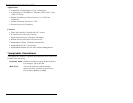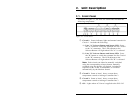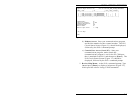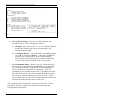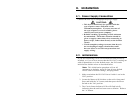
3. Quick Start / System
Overview
This section provides a brief overview of basic PLS capabilities,
and describes a simple test that can be performed to verify that
you are able to communicate with the unit.
The Quick Start procedure is included primarily to provide a
quick demonstration of PLS capabilities. In order to take full
advantage of the complete range of features provided by this
unit, it is strongly recommended that you should complete the
entire Installation and Configuration sections after completing
the Quick Start procedure.
1. Apply Power: Connect the PLS to an appropriate power
source. Prior to connecting the unit to your power supply,
make certain to review the safety precautions listed at the
beginning of this User's Guide, and in Section 4.1.
2. Connect Network Cable, External Modem or PC: In
order to configure and control the PLS, you must first
decide how you will communicate with the unit; via
network, modem, or local PC.
a) Network: Connect your 10Base-T or 100Base-T
network interface to the PLS Network Port. For more
information, please refer to Section 4.4.
Note: The PLS features a 10Base-T Interface. When
connecting to a 100Base-T interface, most router
switches will autosense to determine if the device is
100Base-T or 10Base-T, and then configure the
network interface accordingly. If your router switch
does not autosense, the network interface port must be
manually set to 10Base-T.
b) Modem: Use a standard serial modem cable to
connect your external modem to PLS's Modem Port.
For more information, please refer to Section 4.5.
c) Local PC: Attach a standard null modem cable from
your PC COM port to the Console Port connector on
the PLS back panel. For a description of the port
interface, please refer to Appendix A.
3-1






